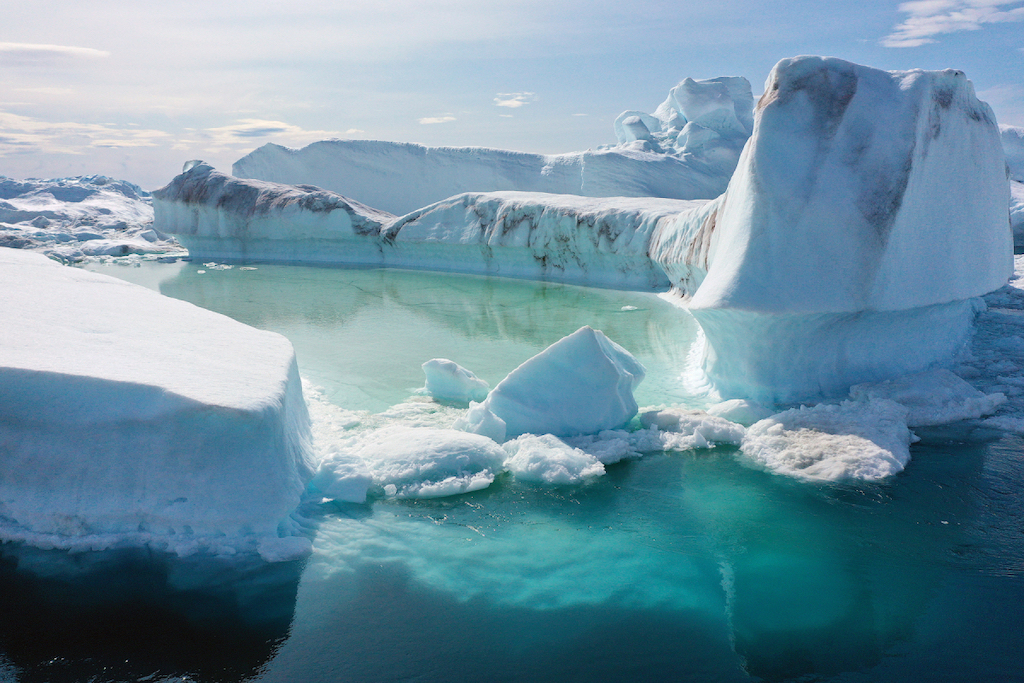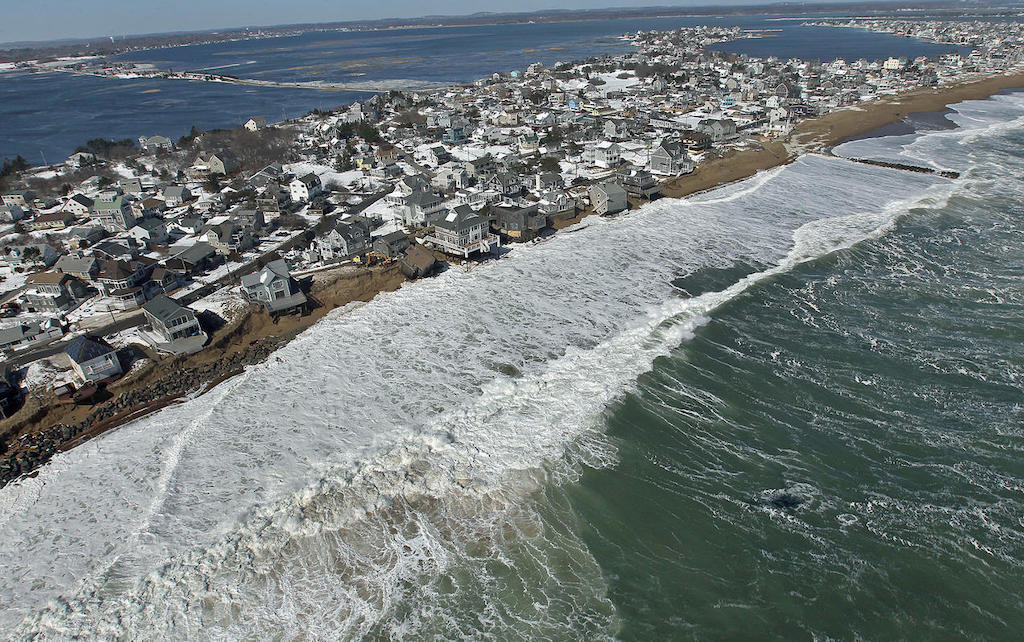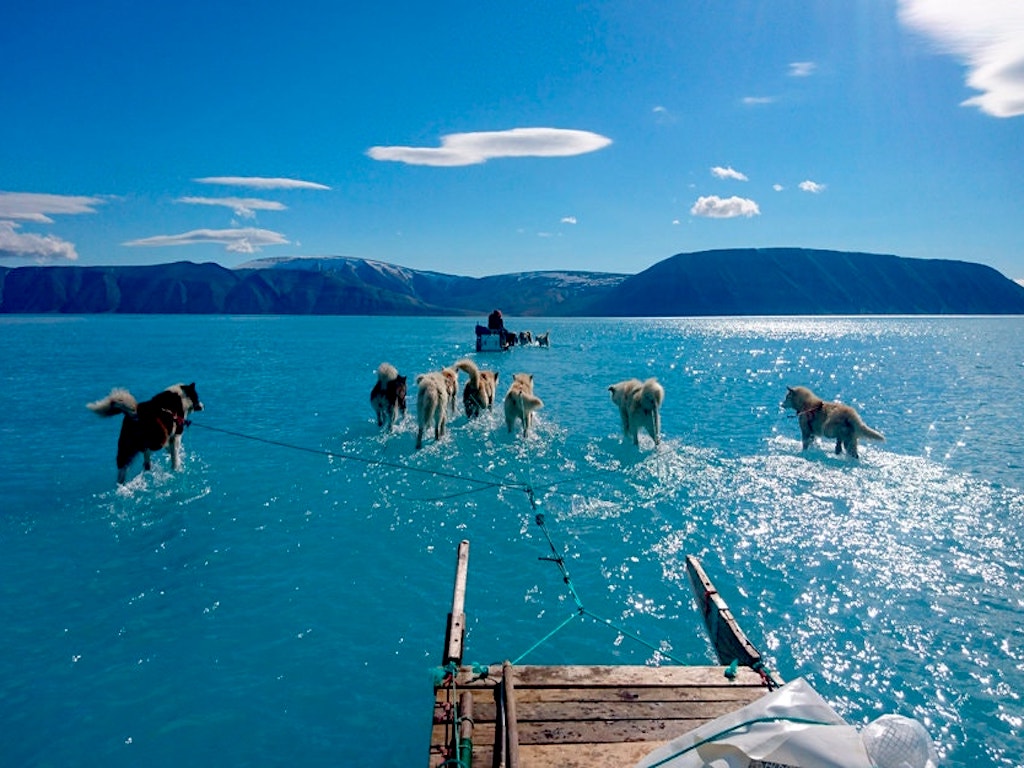4 Mins Read
By: Hannah Thomasy
Scientists are concerned that current climate models do not fully account for the impact of atmospheric conditions on the Greenland Ice Sheet and, consequently, may dramatically underestimate melting.
It’s no surprise that warming temperatures are bad news for the Greenland Ice Sheet, a body of ice that’s 3 times the size of Texas. But temperature isn’t the only factor that controls how fast this monstrous ice sheet is melting.
New research from scientists at Columbia University, NASA, and the University of Liège in Belgium shows that atmospheric conditions play an important role in driving major melting events.
In terms of melting, 2019 was one of the worst years for the Greenland Ice Sheet since measurements began in 1948. It had the second-largest amount of runoff and was the worst year ever in terms of the “surface mass balance negative anomaly.”
Surface mass balance takes into account how much mass is being added to the surface of the ice sheet (usually by accumulation of snow) compared to how much mass is being lost from the surface (because of melting, evaporation, and/or chunks of ice breaking off the edges).
In terms of melting, 2019 was one of the worst years for the Greenland Ice Sheet since measurements began in 1948.
Compared to the 1981–2010 average surface mass balance, in 2019 there was a surface mass loss anomaly of about 320 gigatons of ice—enough water to fill 128 million Olympic-sized swimming pools.
Lead author of the new study Marco Tedesco, a climate scientist at Columbia University’s Lamont-Doherty Earth Observatory, said that unusual atmospheric conditions in 2019 were important contributors to this record-breaking loss.

In much of Greenland, anticyclonic conditions were abnormally persistent. These conditions made it hard for clouds to form, so clear skies prevailed. “When you have clear skies,” Tedesco said, “you have more energy from the Sun reaching the ice surface, which means that you have an advancement of melting.”
Clear skies also meant that there was less snow; snowfall is an important contributor to surface mass balance of the ice sheet.
The persistent anticyclonic conditions, in which winds move in a clockwise direction in the Northern Hemisphere, also drew warm, moist air up from near the eastern United States and Canada into northern and western Greenland, actually promoting cloudy conditions. In this area of the ice sheet, however, the warm, wet clouds also increased melting.
Scientists think that these atmospheric conditions are linked to changes that have been observed in the jet stream.
“It seems that when you have a wavier jet stream, it almost works as a trapping mechanism for the anticyclonic conditions,” said Tedesco. “It creates these pockets of very highly persistent conditions.” Although we still don’t fully understand all of the mechanisms that affect the waviness of the jet stream, Tedesco said it’s likely related to climate change.
Greenland’s impact on the rest of the world
What happens in Greenland could have important implications for the rest of the planet: Tedesco said that the Greenland Ice Sheet is currently the largest single contributor to global sea level rise.
If the entire ice sheet melted, sea level would rise by 7 meters, which would be catastrophic for many coastal cities and for the hundreds of millions of people who live close to sea level.
And the impact of continued melting could be devastating. Eric Rignot, a glaciologist at the University of California, Irvine, not involved in the study, said that an enormous amount of the Greenland Ice Sheet is at high risk of melting. If this high-risk ice melted, he said, it would be enough to raise sea levels by 3 meters, or nearly 10 feet. In an even more severe scenario, if the entire ice sheet melted, sea level would rise by 7 meters, or nearly 23 feet, which would be catastrophic for many coastal cities and for the hundreds of millions of people who live close to sea level.

Studies like the present one are important for building better models to understand how our future will be impacted. Tedesco said that current models could be underestimating future melting by a substantial amount.
“It is important to understand on what timescales this will take place because the process of rapid melt has started,” said Rignot.
“The two largest melt events in the past 500 years were recorded in 2012 and 2019,” he said. “This is telling us something. At least subjectively, large melt events are likely to become the norm, not isolated events occurring every so many centuries.”

This story originally appeared in AGU’s Eos Magazine and is republished here as part of Covering Climate Now, a global journalistic collaboration to strengthen coverage of the climate story.
Lead image courtesy of Steffen M. Olsen / DMI via Associated Press.




